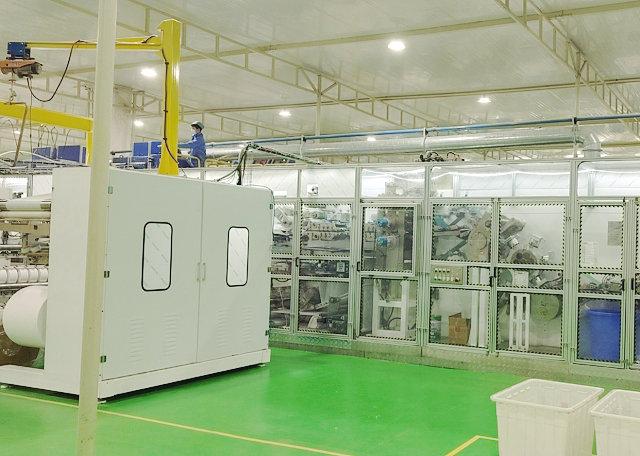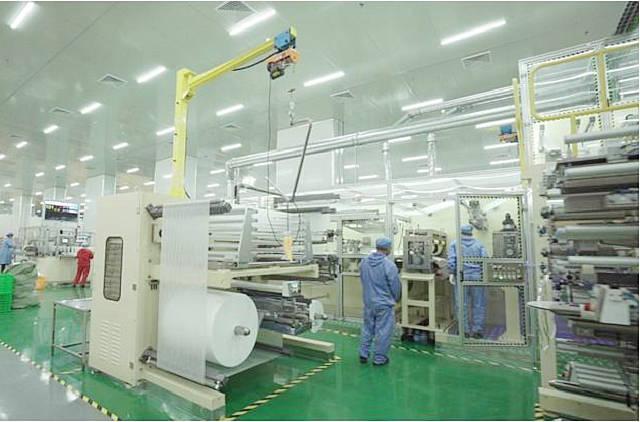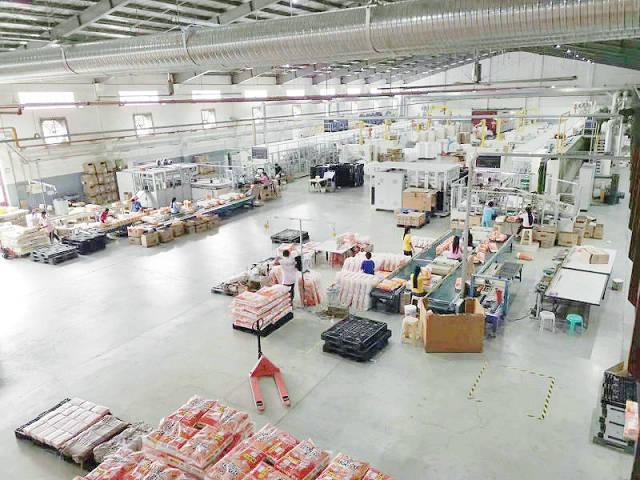Author:Haina Machinery Factory FROM:Diaper Machinery Manufacturer TIME:2024-11-25
In the world of sanitary pad manufacturing, the choice between fully automatic and semi-automatic machines is crucial for production efficiency and quality. These machines play a significant role in the hygiene industry, where the demand for sanitary products continues to grow. Understanding the differences between these two types of machines can help manufacturers make informed decisions that align with their production goals and operational capabilities.

Fully automatic sanitary pad machines are advanced pieces of equipment designed to handle the entire production process without human intervention. From material feeding to packaging, these machines automate each step, resulting in higher production rates and consistency in product quality. They often include features like sensors for quality control, automatic cutting, and packing systems, which significantly reduce labor costs and errors.
Semi-automatic sanitary pad machines require some level of human intervention during the production process. These machines handle essential tasks such as material feeding and cutting automatically, but other functions, like packaging or quality checks, may still need manual input. While they are generally less expensive than fully automatic machines, they can result in lower production speeds and may require more labor to operate efficiently.
One of the most significant differences between fully automatic and semi-automatic sanitary pad machines lies in their production capacity. Fully automatic machines can produce thousands of pads per hour, making them ideal for large-scale manufacturers looking to meet high demand. In contrast, semi-automatic machines typically have a lower output, making them suitable for smaller operations or those producing niche products. The choice of machine should be aligned with the manufacturer's target market and production requirements.
Labor requirements vary significantly between the two types of machines. Fully automatic machines minimize the need for manual labor, often requiring only a few operators to oversee the entire process. This reduction in workforce can lead to cost savings in the long run. On the other hand, semi-automatic machines require more hands-on involvement. Manufacturers may need to hire additional staff to manage tasks like loading materials, monitoring machinery, and handling finished products, which can increase operational costs.
Quality control is essential in the sanitary pad industry, where consumer safety and product reliability are paramount. Fully automatic machines often come equipped with advanced quality control systems that monitor every aspect of the production process. This capability ensures that any defects are detected and corrected in real-time, leading to a more consistent product. In contrast, while semi-automatic machines can produce high-quality pads, the manual elements of their operation can introduce variability and increase the chances of defects.

The initial investment for fully automatic machines is typically higher than that for semi-automatic machines. This upfront cost can be a significant barrier for small manufacturers. However, fully automatic machines usually offer lower long-term operational costs due to their efficiency and reduced labor needs. In contrast, while semi-automatic machines are more affordable initially, the ongoing labor costs and potentially lower output can make them more expensive over time, especially if production needs increase.
Flexibility in production is another area where these two machine types differ. Fully automatic machines are often designed for high-volume production runs of specific products, which can limit their adaptability to changing market demands. However, many modern fully automatic machines can be programmed to produce different pad sizes and types, providing some level of customization. Semi-automatic machines offer greater flexibility, allowing manufacturers to switch production lines more easily to accommodate new products or variations in design, albeit at the cost of efficiency.

Maintenance requirements also differ between fully automatic and semi-automatic machines. Fully automatic machines tend to have more complex systems that require specialized knowledge for repairs and maintenance. While they may have fewer breakdowns due to automation, when issues do arise, they can lead to longer downtimes. Conversely, semi-automatic machines, being simpler, may be easier to maintain and repair, allowing for quicker turnaround times when issues occur. However, their reliance on manual operation can still lead to inefficiencies if not properly managed.
The environmental impact of production processes is becoming increasingly important for manufacturers. Fully automatic machines often operate more efficiently, using less energy and generating less waste compared to their semi-automatic counterparts. Advanced automation can optimize material usage and reduce scrap rates, contributing to a lower carbon footprint. Semi-automatic machines, while potentially less efficient, may still offer opportunities for environmentally conscious practices, depending on the manufacturer's approach to waste management and resource use.
Choosing between fully automatic and semi-automatic sanitary pad machines involves careful consideration of various factors, including production capacity, labor requirements, quality control, and costs. Fully automatic machines offer higher efficiency and lower long-term operational costs, making them suitable for large-scale manufacturers. In contrast, semi-automatic machines provide flexibility and are more affordable upfront, catering to smaller operations or niche markets. Ultimately, the decision should align with the manufacturer’s production goals, budget constraints, and market demands, ensuring a balance between efficiency and quality in sanitary pad production.
